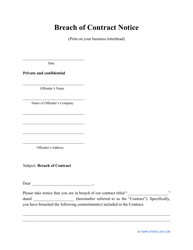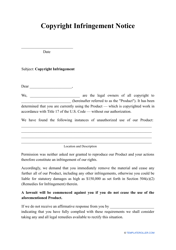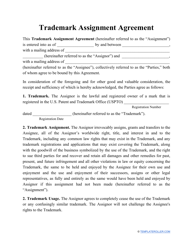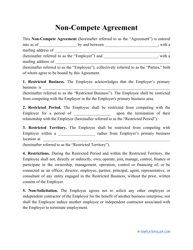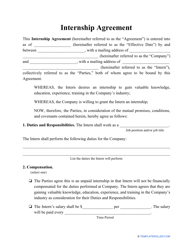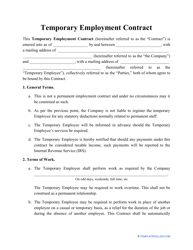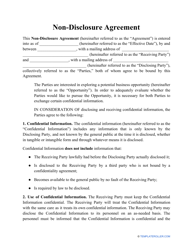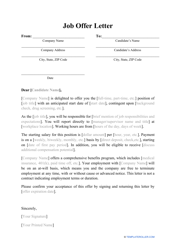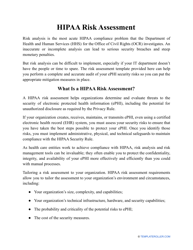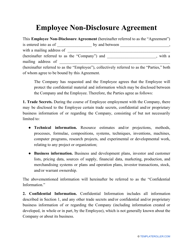Confidentiality Agreement Template
What Is a Confidentiality Agreement?
A Confidentiality Agreement is a legal contract signed by certain parties upon which they are prohibited from disclosing confidential and proprietary information. Confidential and proprietary information can include intellectual property, trade secrets, commercial transactions, inventions, business ideas, formulas, copyrights, software, etc.
Using it has a wide range of benefits for the owner of the information that shall not be disclosed, such as:
- It maintains a competitive advantage since the confidential information is prevented from going public;
- The contract clearly states the terms and responsibilities. It clarifies what should and what should not be considered confidential;
- The agreement helps to preserve confidentiality by setting certain levels of information protection. Parties can be required to follow certain protocols to work with the information;
- Legal protection. If a recipient of information violates the agreement, the owner of the information has the right to sue the recipient for damages.
You can download our free printable Confidentiality Agreement form through the link below or create your own using our Confidentiality Agreement template with our online form builder.
What Is a Confidentiality Agreement Used For?
A Confidentiality Agreement is a document with significant value, it can be used in various situations and signed by different parties. The document is most commonly used in the following instances:
- When an agreement is signed between an employer and an employee to protect sensitive information that the employee has access to.
- When a contract is signed between two companies to withhold commercial information.
- It is often used during mergers to avoid market manipulation.
- Other situations when confidential information is being shared but the owner of it wants to protect themselves.
Depending on how many parties are involved in a Confidential Agreement it can be unilateral or bilateral. A unilateral agreement is a one-way agreement upon which one party is bound not to disclose information owned by another party. These kinds of agreements are mostly used with new employees. A bilateral agreement is used when both sides are bound to protect each other's sensitive information.
Is a Confidentiality Agreement the Same as an NDA?
There are a lot of different opinions on whether a Confidentiality Agreement is the same thing as a Non-Disclosure Agreement (NDA), however, most of the specialists tend to consider them slightly different. The opinion is based on several subtle differences between the two, such as:
- An NDA is mostly used to protect private and personal information from disclosure to third parties or to the public, while a Confidentiality Agreement focuses more on confidentiality rather than on non-disclosure. It requires a party to make sure information is being kept secret;
- An NDA is more common when it comes to signing an agreement with suppliers, investors, etc. and the object under protection, in this case, will be intellectual property, trade secrets, etc. A Confidentiality Agreement is a document that is often being signed by an employer and employees to protect information that can potentially damage the employee or the company;
- Generally, an NDA is a unilateral document, it contains a one-way obligation. If there is a two-way obligation, when both of the sides exchange sensitive information, then the document is most likely to be titled as Confidentiality Agreement;
- NDAs are typical for the US, while Confidentiality Agreements are more widely used in Canada, Australia, and the United Kingdom.
Despite the differences, in practice, there is no difference between these two documents. The terms and conditions are changeable in both of the documents, and they guarantee the same level of protection.
How to Write a Confidentiality Agreement?
Any basic Confidentiality Agreement consists of the following parts:
- Confidential Information . The first part of the document should define the sensitive information that is supposed to be under the protection of the document.
- Parties Involved . The receiving party and the disclosing party, and their representatives, should be indicated in the agreement as well.
- Use of Confidential information . An explanation of why the recipient knows the confidential information and how they shall and shall not use it. If the reproduction of the information is prohibited, then it should be included as well.
- Recipient's Rights and Obligations . A list of the rights and obligations of the recipient (included in order to protect confidential information from disclosure).
- Notice of Disclosure . If by any chance a recipient disclosed confidential information they must immediately notify the disclosing party about it.
- Waiver of Rights . Any term of the agreement can be waived only with the written consent of the disclosing party.
- Term . Time frame (or date) when the document goes into effect and when it terminates. After the termination of the contract the recipient shall return all the documents that contain confidential information.
- Signatures .
Parties can include other legal statements in the document, such as jurisdiction, severability, choice of law, etc., depending on the cause and the specifics of the situation.
Haven't found the document you are looking for? Take a look at these similar forms:







